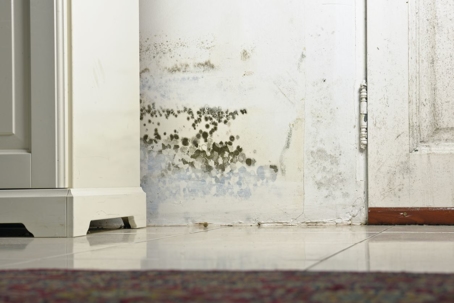Mold and mildew can be a nightmare, causing health issues and damaging the structure of your home. Fortunately, your HVAC system can play a significant role in preventing and reducing mold and mildew growth.
As an HVAC specialist company based in San Jose, we understand the unique challenges homeowners face when it comes to mold and mildew. We also know how difficult it can be to get rid of mold or mildew once they have taken root. Luckily, your HVAC system plays a crucial role in mold prevention.
In this blog, we'll guide you through signs of mold or mildew problems in your home and how your HVAC system can be used to help reduce or prevent these issues.
Signs That You Have Mold or Mildew Problems in Your Home
Mold and mildew are often overlooked until they become a larger problem. This is generally because the average homeowner is unaware of the early signs of a mold problem. Early detection is key to preventing extensive damage and potential health risks.
Some tell-tale signs that you may have a mold or mildew problem in your home include:
- Unusual musty odors: a persistent damp, musty smell in your home could be a sign of hidden mold.
- Worsening allergies or asthma: S]sudden or worsening indoor respiratory problems may indicate mold presence.
- Visible mold growth: mold can appear as fuzzy, discolored or slimy patches that grow in size. Look for this in areas of your home where water and humidity are frequently present, such as bathrooms, kitchens and the laundry room.
- Moisture issues: recent water leaks or condensation build-up can create ideal conditions for mold growth.
By taking proactive measures, you can safeguard your home and well-being from mold and mildew's harmful effects. The first step in preventing mold growth in your home is to understand how your HVAC functions and how it supports your mold-prevention efforts.
Your HVAC System and Managing Humidity
Your HVAC system isn't just for controlling temperature; it's also pivotal in managing humidity levels, which directly impact mold growth. Your HVAC system controls humidity by either adding moisture to your home's air during dry periods (in systems with a built-in humidifier) or removing excess moisture during humid times.
Humidity issues tend to be most prevalent in the summer months and your home's cooling system is your first line of defense in keeping excess humidity at bay. It uses a component called an evaporator coil to remove humidity from the air. As the system pulls warm air from your home, it passes over this chilled coil, causing the moisture in the air to condense and drain away, effectively reducing the humidity level and creating a less hospitable environment for mold growth.
Add-on features that can further help you control chronic humidity issues in your home include:
- Whole-home dehumidifiers
- Single-room exhaust fans, such as in kitchens and bathrooms
- Whole home exhaust fans and ventilators
Maintaining Your HVAC System to Prevent Mold Growth
As said, mold thrives in humid environments, but an efficiently running HVAC system can help keep humidity levels in check. Regular HVAC system maintenance is essential in preventing mold and mildew growth. This includes frequent filter changes, coil cleanings, and inspections. A clean, well-functioning system reduces the chances of mold spores spreading through your home.
We recommend that you have your home's HVAC system professionally serviced by the Valley Heating, Cooling, Electrical and Solar team at least once a year.
Ductwork Maintenance and Mold Prevention
Ductwork can often be a hidden source of mold and your HVAC ducts are some of the most overlooked parts of your HVAC system when it comes to maintenance. Regular inspections and professional cleanings can help identify and address any mold issues early on. If there's substantial mold growth, professional remediation may be necessary.
When you schedule your HVAC maintenance with Valley, we will inspect your ductwork as part of the process. Professional duct cleaning should be performed every three to five years, depending on the condition of your ductwork and whether you are experiencing any chronic duct issues.
If you suspect any mold issues in your home, don't hesitate to contact us at Valley Heating, Cooling, Electrical and Solar. We're here to help you keep your home comfortable and mold and mildew-free.

